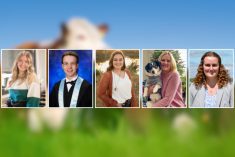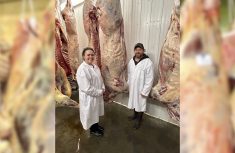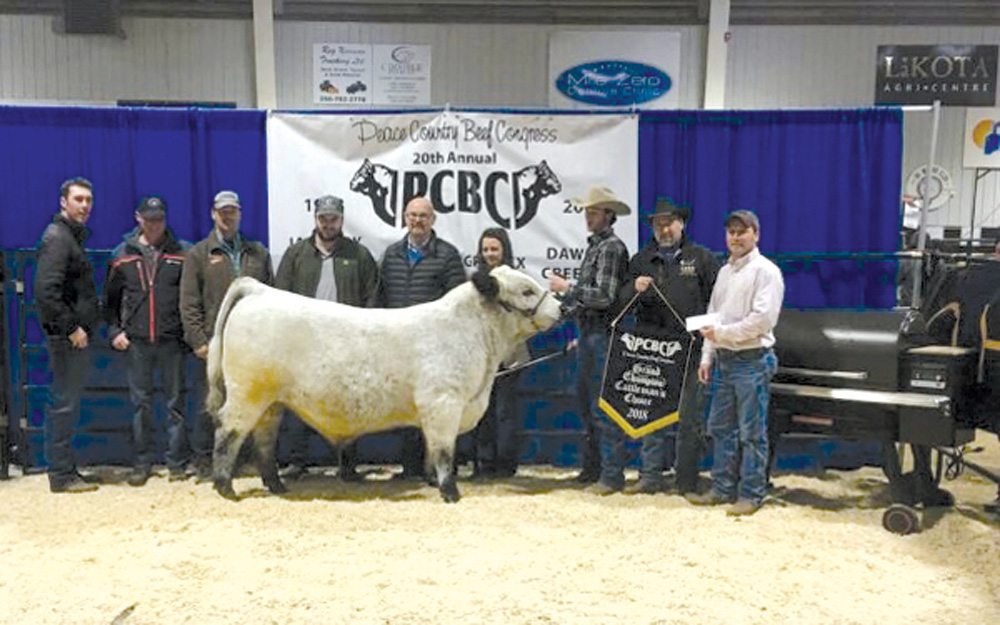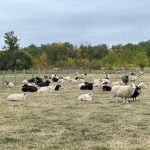An Alberta couple’s passion for investing in top breeders has helped produce high-quality Limousin and Hereford cattle in Canada and they don’t even own a farm.
“We didn’t have the capital to buy a place and cattle,” says Anne Brunet-Burgess. “We started slowly, but got really involved in 2015, with Wayne’s nephew Justin, who was fresh out of school and bought a small farm near Hanover, Ont. We added two Limousins to his herd and we got the bug.”
Basically, the Burgesses buy high-end breeding cattle or buy shares in the cattle. The producers they buy from feed, water and take care of the animals and, in some cases, show them.
Read Also

Purely Purebred: Condolences to the families of Greg Paranich and Ed Williams
News about people in the Canadian cattle industry
They are currently invested in 70 head of cattle at eight different locations in four Canadian provinces — Ontario, Saskatchewan, Alberta and British Columbia.
Anne and husband Wayne live in Olds, Alberta. Anne is the general manager of the Canadian Cattle Identification Agency, and Wayne is one of the top salespeople with Ford Canada. He’s also the president of the Canadian Limousin Association.
In the beginning
They got serious when they bought the top-selling female Limousin from Eric Boon at B-Bar Cattle in Saskatchewan in 2016.
“That was our first big purchase,” Anne says. “She became a donor cow, which, when it works, provides a faster return on investment.”
Donor cows are treated to super ovulate so they produce more than one egg. They’re inseminated and the embryos are flushed. The embryos are then placed in recipient cows.
[RELATED] Feeding cows for fertility
The reason they’re only interested in high-end, pedigreed cattle is that they get a small percentage of the revenue that the animals make.
“It’s easier to make money on a top-end cow because on a regular or even a really good cow, the (income) pie isn’t big enough for everyone,” Anne says. When they acquire a female, they hope she becomes a donor, and only the top few per cent of females in a breed are donors.
“It’s not a one-size-fits-all kind of model — it depends on the people, the cattle and situations,” she says. While Anne and Wayne have day jobs, most of their partners are full-time cattle producers.
Wayne is from a Limousin background and Anne grew up on a Hereford farm — which is why they have so far concentrated on these two breeds.
Wayne has managed a large Limousin farm in the past and is a former editor and publisher of the Limousin Voice. He marketed cattle full-time with his former business Venture Livestock Enterprises. The Burgesses kept the business name when they started buying breeding stock.
Both Anne and Wayne are interested in genetics, so they do their homework on the pedigrees of the animals they are looking to buy.
“We like the animals — with the prospect of some return on investment. We also look at the potential markets and, as important, the partners,” Anne says, adding that they usually go for younger producers who are keen, are at the top of their game in terms of animal husbandry, are good managers and share the same values as they do.

As an example of their business model, in 2017, when Anne was in Ottawa, she bought a half-interest in a couple of calves owned by her friend Laura Naismith and her husband Paul Stafford, which turned out very well.
“One was the Reserve Champion female at the Royal Winter Fair in 2018 and we have had lots of show successes with the Herefords ever since,” she says.
While they have done well with most of their partnerships, not all of them have worked out.
“There have been a few challenges. The greatest one is to achieve a balance where our partners and ourselves feel that the arrangement is mutually beneficial. Sometimes, it’s simply not a good fit,” she says.
They like it when their partners are as excited as they are and keep them informed as to the progress of their investments.
“Keeping in touch fuels our interest — we love getting news about our cattle,” she says.
She understands that producers are very busy, but says that given the distances between the farms and themselves — some 3,500 kilometres in some cases — they aren’t able to keep tabs on the animals’ progress in any other way. The Burgesses do try to visit their partners in person once or twice a year but also rely on email or phone updates from them.
Stunning results
The Burgesses continue to be supportive of nephew Justin, who has thrived as a cattle producer from the partnership and on his own. Today, he has a young family, continues to work off-farm and is just as passionate as his uncle and aunt about his Limousins, having had three Champion or Reserve Champions at the Royal Agricultural Winter Fair (RAWF).
Anne says that on average, donor cows will give five embryos per flush. Fresh embryos have a much better chance of conception — at approximately 80 per cent — than frozen embryos, at 50 per cent.
In one instance, the Burgesses and the Boons of B-Bar Cattle bought the right to flush a Limousin cow that produced a stunning 14 embryos.
“Eric only had 13 recipient cows ready and all 13 caught, with a 100 per cent pregnancy rate, which is unprecedented,” she says.
All the calves were born alive and were either sold or kept.
Out of those 13 animals, they took three bulls and two females to Canadian Western Agribition, the largest livestock show in Canada. “The one female won the heifer calf division and was the top seller at the sale. One of the bulls was Grand Champion, one was Reserve Champion, and the third won its class,” she says, noting that they could not have done better as show cattle before marketing.
“We don’t expect to duplicate that,” says Wayne, adding that, while this kind of success was the result of excellent management, it also took a lot of luck.
Out of the group, they kept one female, Eric Boon kept two, they sold one female and all nine bulls were sold.
The 14th embryo was frozen and implanted into a recipient this year, and they’re looking forward to 2023 and another live calf. Wayne says that there are many partnership cattle in the industry, but not many do it on the scale that they do.
The couple is passionate about investing in top breeders and regularly take their vacation time by going to cattle shows or sales and visiting their cattle.
“We appreciate our partners so much and we enjoy contributing to their success,” Anne says. “Some people have a cottage or a boat — we have cows.”
















